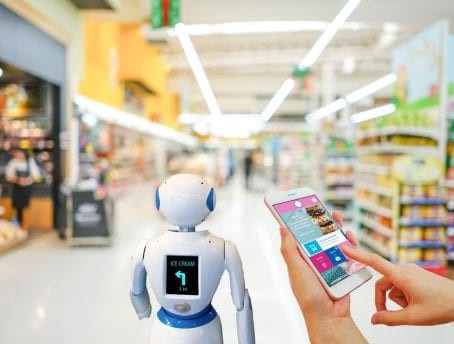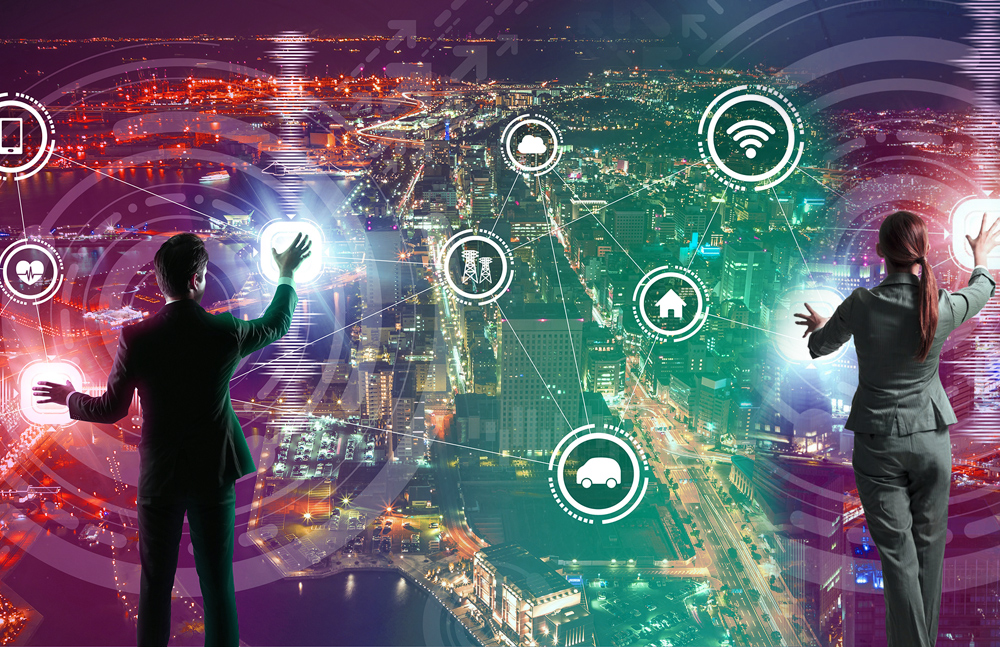How IoT is used in Retail (A Complete Guide2024)
Transforming Retail: The Power of IoT

Transforming Retail: The Power of IoT
The retail industry is no stranger to technological innovation, and in recent years, the Internet of Things (IoT) has emerged as a game-changer. IoT technology is revolutionizing the way retailers operate, enhancing customer experiences,

streamlining operations, and providing valuable insights into consumer behavior. In this article, we explore how IoT is used in retail and the significant impact it has on this dynamic sector. EnoughInfo.net
The Internet of Things in Retail
1. Inventory Management
One of the most significant advantages of IoT in retail is improved inventory management. Retailers can employ IoT-enabled sensors and RFID (Radio-Frequency Identification) tags to track inventory levels in real time. This technology not only ensures that products are consistently in stock but also allows for more efficient supply chain management. how IoT is used in Standards and Interoperability(2024 Guide)
2. Smart Shelves and Smart Shoppers
Smart shelves equipped with IoT sensors can detect when products are removed or placed back on the shelf. This data can help retailers monitor product popularity, optimize product placement, and even provide in-store navigation for customers via their mobile devices. How IoT is used in Energy Management:(2024 Guide)
3. Enhanced Customer Experience
IoT technology allows retailers to offer personalized experiences to customers. For instance, beacons placed throughout the store can transmit personalized discounts, recommendations, and promotions to customers’ smartphones, making their shopping experience more engaging and tailored to their preferences.
4. Improved Checkout Processes
IoT can streamline checkout processes. Self-checkout kiosks, RFID technology, and IoT-enabled mobile payment options make transactions quicker and more convenient for customers.
5. Supply Chain Optimization
IoT enhances the supply chain by providing real-time tracking and monitoring of products in transit. Retailers can track products from the manufacturer to the store shelf, ensuring transparency and reducing the risk of theft or spoilage. how IoT is used in transport and logistics:(2024)
6. Energy Efficiency
IoT is instrumental in energy management. Smart lighting and HVAC systems can be controlled and optimized remotely, reducing energy consumption and lowering operational costs.
IoT Applications in Retail
The applications of IoT in the retail sector are diverse and continue to evolve:
1. Smart Retail Stores
Retailers are transforming their stores into smart environments. They use IoT to track customer movements, gather data on foot traffic, and analyze shopping patterns to make data-driven decisions about store layout and product placement. How To Protect Iot Devices From Hackers(All You Need To Know)
2. E-commerce and Omnichannel Retail
E-commerce relies heavily on IoT for order tracking, inventory management, and personalized shopping experiences. IoT-enabled warehouses and distribution centers enhance the efficiency of online retail operations.
3. Loss Prevention
IoT technology is used for loss prevention by monitoring areas susceptible to theft and tracking items with RFID tags. This technology helps prevent shoplifting and internal theft.
4. Predictive Maintenance
IoT devices enable predictive maintenance of store equipment, such as refrigeration units and HVAC systems. Retailers can address maintenance needs proactively, reducing downtime and operational costs.
5. Customer Analytics
Retailers can collect and analyze customer data to gain insights into shopping habits, preferences, and behaviors. This information informs marketing strategies, inventory management, and product development.
Challenges and Considerations
While IoT offers tremendous benefits to the retail industry, there are challenges to address:
- Data Security: Handling vast amounts of customer data requires robust security measures to protect against data breaches and privacy violations.
- Cost of Implementation: The initial investment in IoT technology can be significant, requiring retailers to carefully evaluate the return on investment.
- Privacy Concerns: Collecting customer data raises concerns about privacy and requires retailers to implement transparent data collection and usage policies.
- Integration: Integrating IoT technology with existing systems and processes can be complex and may require additional training for employees.
In conclusion,
IoT technology is transforming the retail industry by enhancing the customer experience, optimizing supply chains, and improving operational efficiency. Retailers that harness the power of IoT can gain a competitive edge by providing more personalized and efficient services to their customers. As IoT technology continues to evolve, we can expect even more innovative applications that will redefine the retail landscape.








